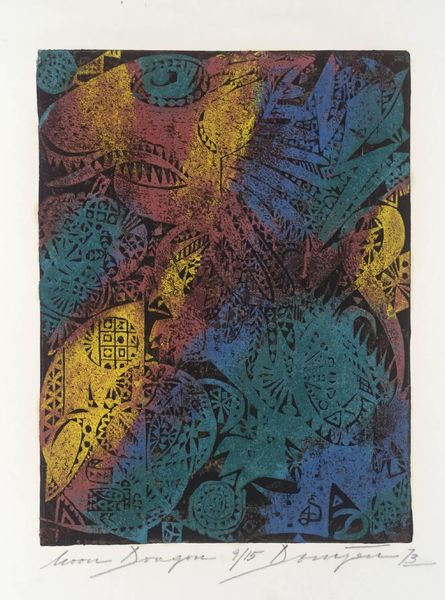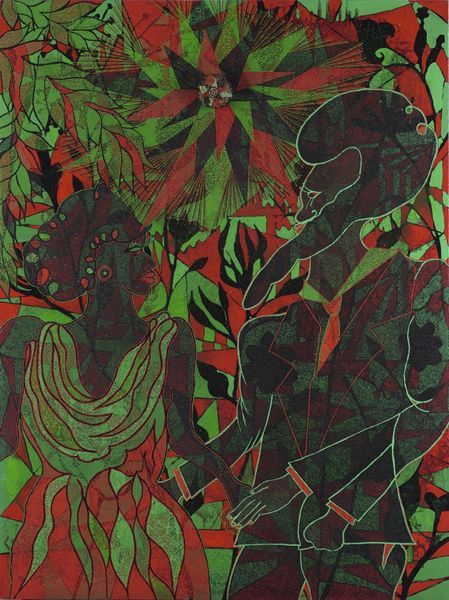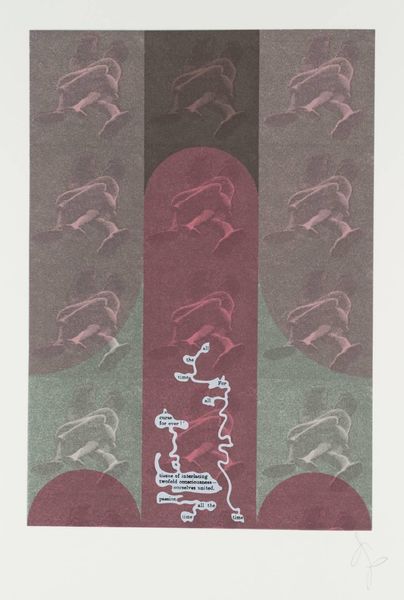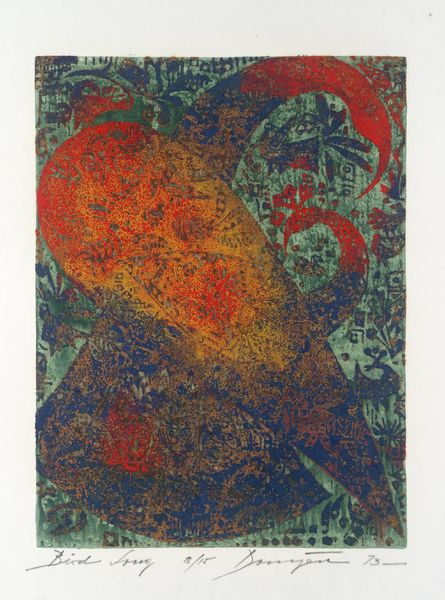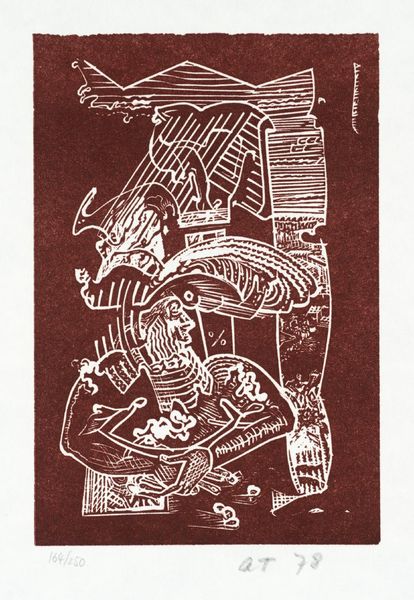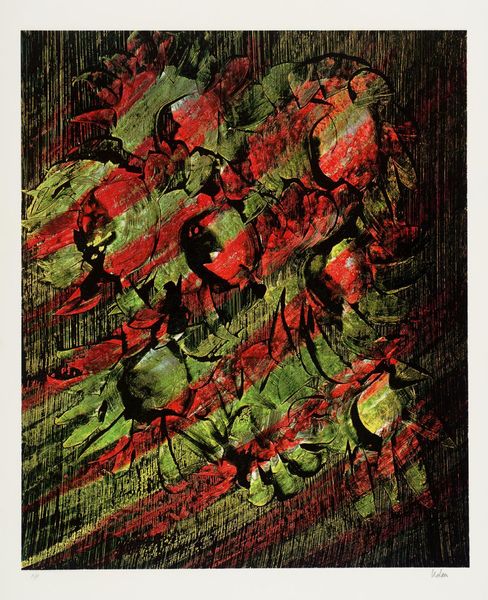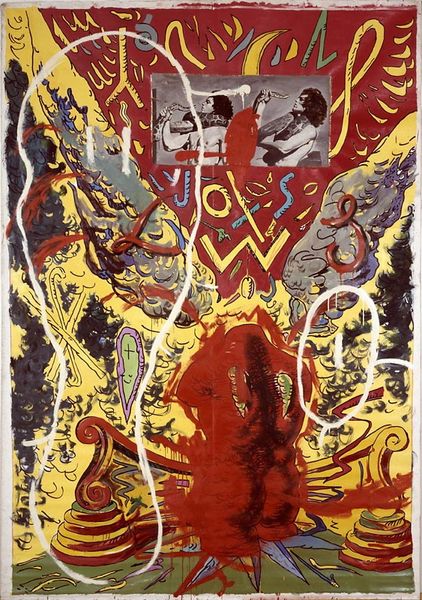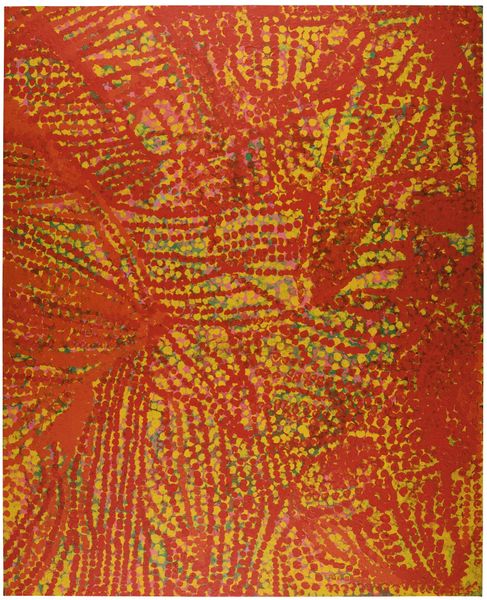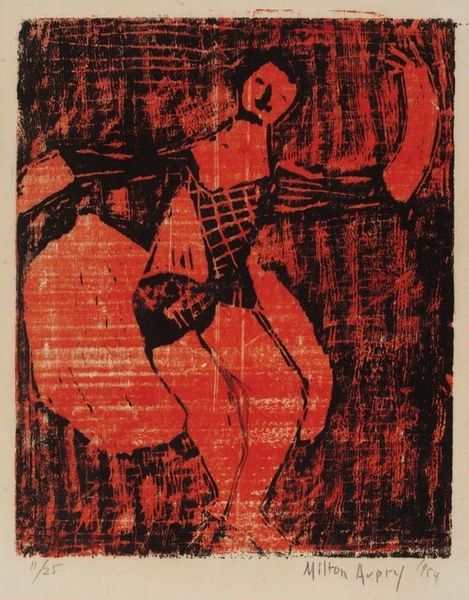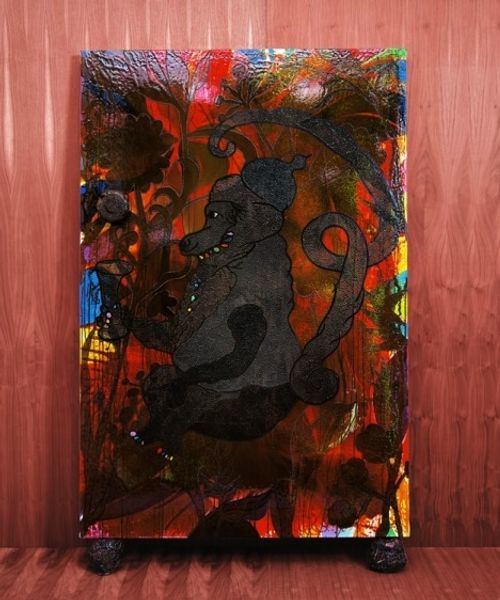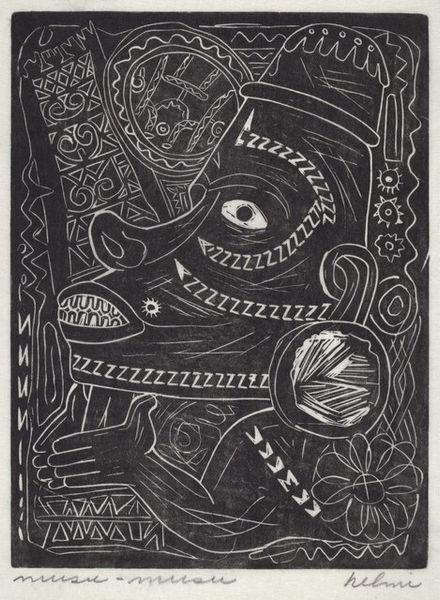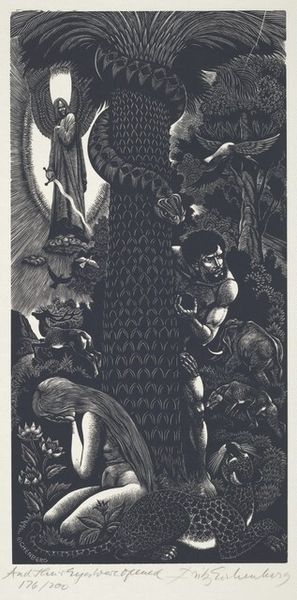
Copyright: Chris Ofili,Fair Use
Curator: I’m immediately struck by the intensity of this color palette. The heavy reds, punctuated by strategic greens—it feels both seductive and a little dangerous. Editor: Absolutely. And it's key to remember the context. What you're seeing here is "Afro Red Web" a painting executed in 2003 by the British artist Chris Ofili. His practice often engages with loaded questions surrounding identity, race, and representation, and the intense emotional effect it has, shouldn’t be divorced from it. Curator: Speaking of representation, I find myself focusing on the veiled figures. That web-like pattern overlaying them… Is that intended to obscure or reveal something about their identities, do you think? Editor: Perhaps it's a bit of both. The web might be understood as a mask—a layer of protection but equally it could also be a net, entangling these figures within specific cultural and societal frameworks. And what of the colors chosen? Red can mean so much depending on the location and context: it may point towards revolution, it could evoke passion, love, but also, it can denote anger, warning. The overlay with green is particularly striking and adds an ambiguous tone. Curator: That makes me think about ritualistic practices or even shamanic traditions, recalling how the color red links to transformation. And consider the foliage framing the figures – there's a very specific tension there between what's contained versus what breaks free, the figures constrained within the canvas in the context of abstraction Editor: Agreed, and let’s not overlook how this ties to the canon of abstraction itself, often excluding artists of color. Ofili's interventions aren’t just aesthetic choices, they're active disruptions. Curator: So true, and viewing this work in the context of Ofili's wider body of work is so necessary. Editor: Ultimately, Ofili's symbolic choices open a doorway to consider deeper societal conversations. It urges us to face history and understand the emotional undercurrents shaping our present.
Comments
No comments
Be the first to comment and join the conversation on the ultimate creative platform.
